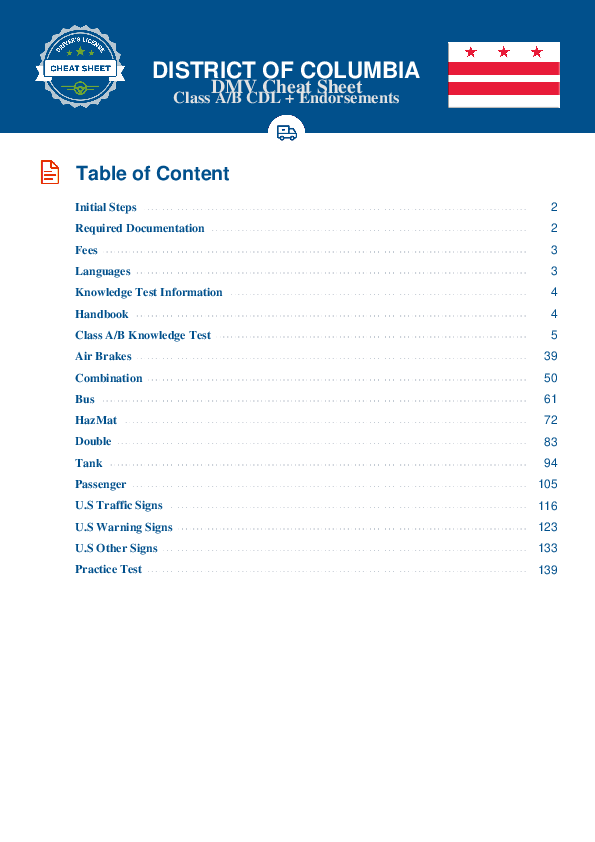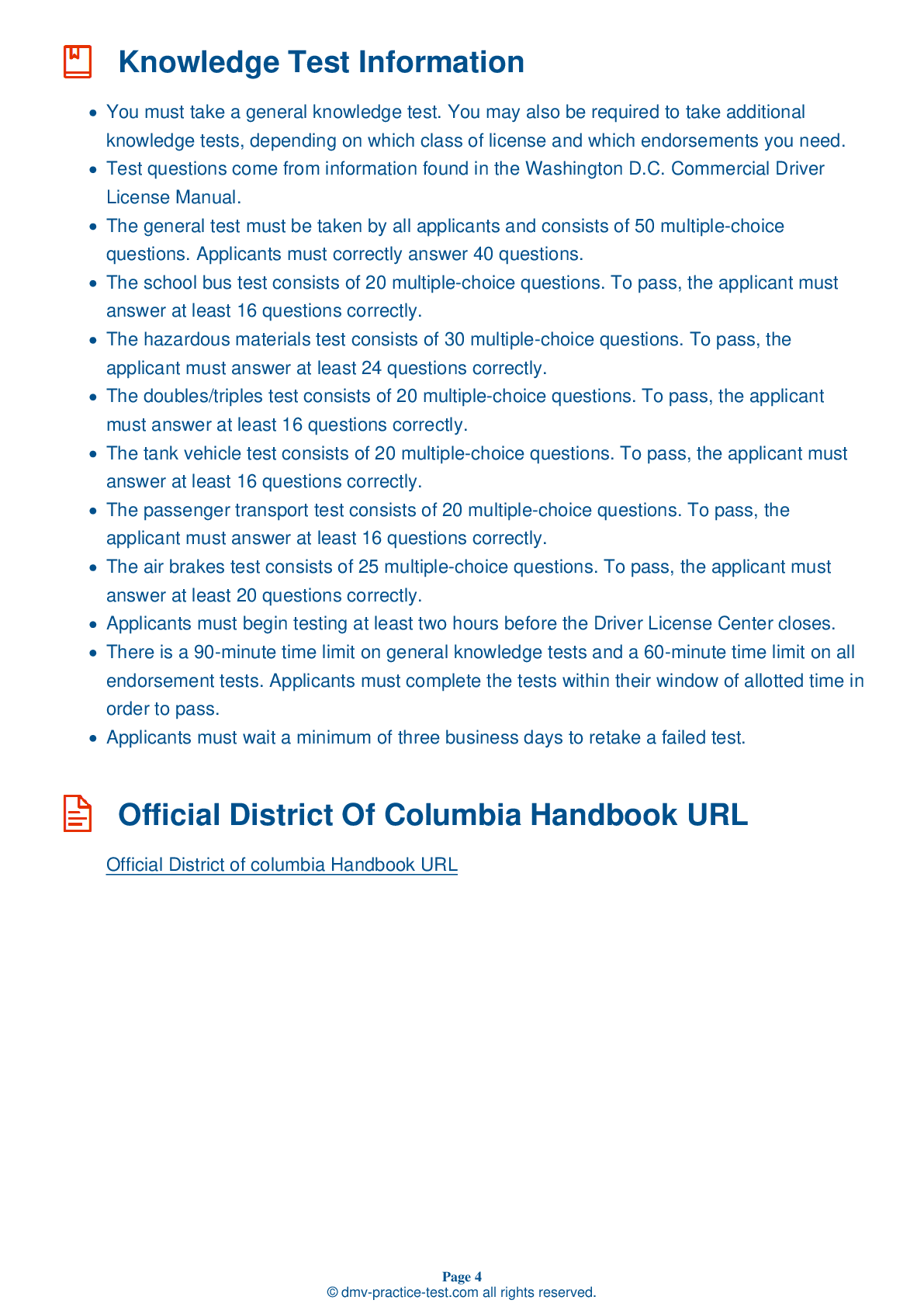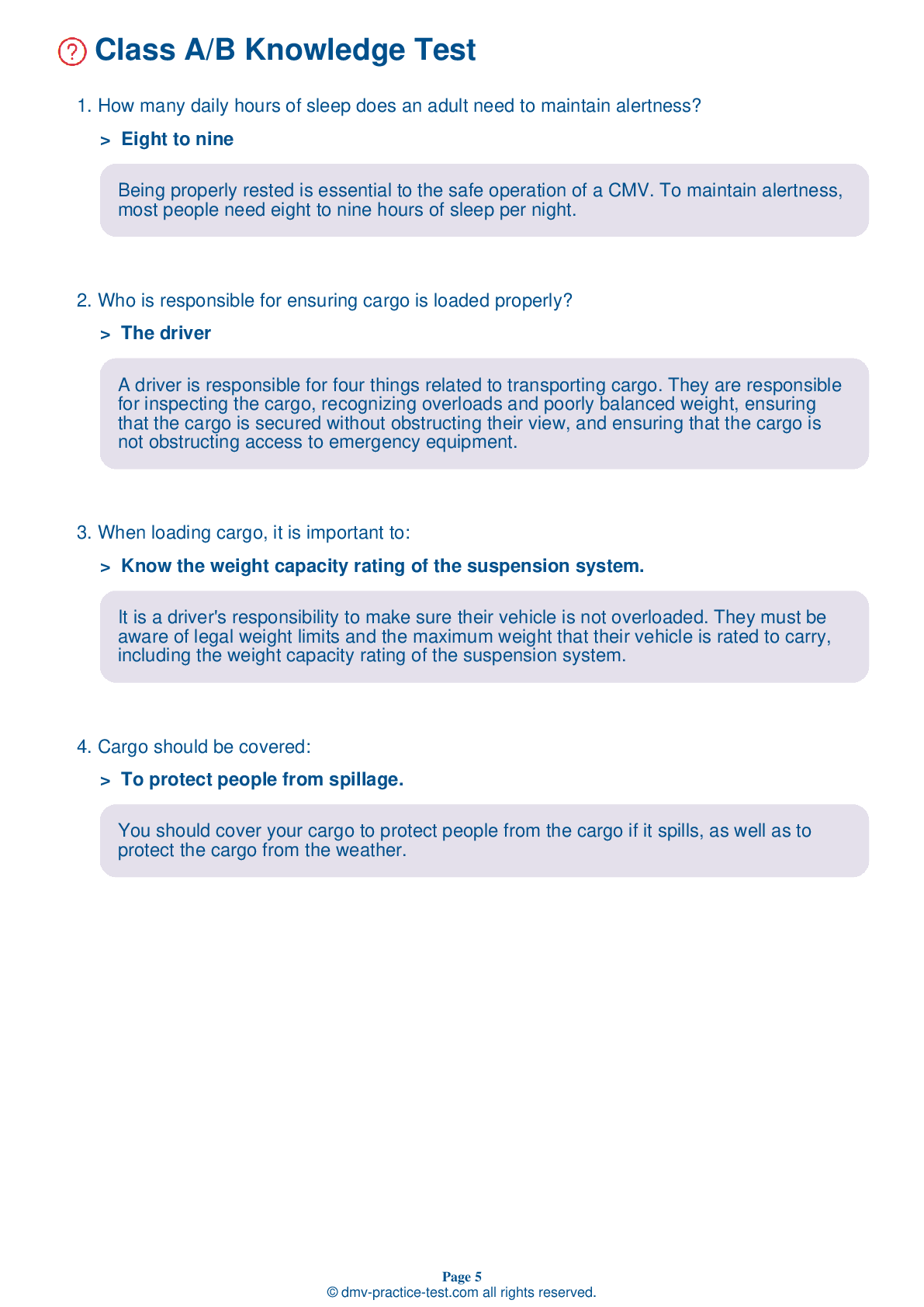Bus #2
Bus Driver Testing | District Of Columbia 2025 #2 Page 2 of 3
Train for FREE online with our DC bus CDL test. The official exam test consists of several obligatory parts, with all of them checking your knowledge of different blocks of road rules. If you need to obtain a license in District Of Columbia in 2025, learn how to become a bus driver and then practice as much as possible. Free sample tests published on our website will help you check and improve your knowledge and boost your grades. Please bear in mind that DMV requirements for a bus driver may vary from state to state.
20
16
20
8 . School bus stops may be changed by:
Students.
A school bus driver should not change the location of a stop without written approval from appropriate school district officials.
9 . When students unload, they should:
Jump down from the top step.
Students leaving a school bus should remain seated until they are cleared to exit. After exiting, they should walk at least 10 feet away from the bus to a location where the driver can see them.
10 . Drivers should try to stop ____ away from students at a bus stop.
Less than 10 feet
A school bus should stop at least 10 feet away from students who are being picked up at a bus stop. This forces the students to walk toward the bus, allowing the driver to observe their movements and better monitor their locations.
11 . When boarding the school bus, students should:
Try to take two stairs at a time.
Students should board a school bus slowly in a single-file line while using the handrail.
12 . If equipped with flashing lights, how far in advance of a school bus stop should the bus's lights be activated?
At least 1,000 feet
If a school bus is equipped with alternating flashing amber warning lights, they should be activated at least 200 feet before a stop, unless state law requires otherwise.
13 . As a general rule, student safety is best maintained by:
Creating panic.
In most emergency situations, students will be safest and best kept under control if they do not evacuate the school bus.
14 . When unloading students at a school, the driver should:
Not be on the bus.
When dropping children off at a school, the bus driver should secure the bus by turning off the ignition. The driver should remove the key if they leave the driver's compartment.
2025 District Of Columbia | Frequently Asked Questions
In the District of Columbia, a CDL Class A license allows the holder to operate any combination of vehicles with a Gross Combination Weight Rating (GCWR) of 26,001 pounds or more, provided the Gross Vehicle Weight Rating (GVWR) of the vehicle(s) being towed is over 10,000 pounds. This includes tractor-trailers, truck and trailer combinations, and flatbeds.
A Class A CDL license in the District of Columbia permits the holder to operate various types of larger, heavier commercial vehicles. This includes tractor-trailers, truck and trailer combinations, tank vehicles, livestock carriers, and flatbeds. The vehicles can have a Gross Combination Weight Rating (GCWR) of 26,001 pounds or more if the towed vehicle is over 10,000 pounds.
To obtain a Class A CDL license in the District of Columbia, you must be at least 21 years old, possess a valid non-commercial driver's license, pass a vision test, and provide proof of residency and identity. You'll also need to pass written knowledge tests, obtain a Commercial Learner's Permit (CLP), and successfully complete a skills and road test.
In the District of Columbia, you must be at least 21 years old to qualify for a Class A Commercial Driver's License (CDL). This age requirement is consistent across all states and is set by federal regulation. This allows for interstate operation of commercial vehicles. For intrastate (within the same state), the minimum age can be 18.
Specific endorsements are not required for a Class A CDL license but they can provide additional driving privileges. These include endorsements for operating vehicles like school buses, passenger vehicles, tank vehicles, and vehicles carrying hazardous materials. Each endorsement requires passing specific knowledge and skills tests.
The Class A CDL skills test in the District of Columbia consists of three parts: the vehicle inspection test, the basic control skills test, and the road test. The vehicle inspection test involves checking the vehicle's safety components, the basic control skills test assesses your ability to maneuver and control the vehicle, and the road test evaluates your on-road driving skills.
Yes, limitations can be imposed on Class A CDL license holders in the form of restrictions. These are based on the driver's abilities or the type of vehicle they tested in. For example, if a driver takes the skills test in an automatic transmission truck, they will have an 'E' restriction, limiting them to automatic transmission vehicles only.
Yes, it is possible to take the written Class A CDL test in languages other than English in the District of Columbia. However, the Federal Motor Carrier Safety Administration requires all CDL holders to read and speak English sufficiently to converse with the general public, understand highway traffic signs and signals, respond to official inquiries and make entries on reports and records.
Yes, you can request accommodations for the Class A CDL written test in the District of Columbia due to disability. The DMV is committed to providing accessible services and accommodations to individuals with disabilities. You should contact the DMV directly in advance of your test to discuss your needs and the potential accommodations available.
If you don't pass the Class A CDL written test in the District of Columbia, you are allowed to retake it. However, you must wait three days before retaking the test. If you fail the test three times, you must wait 90 days before taking it again. There's also a retesting fee that applies each time.



